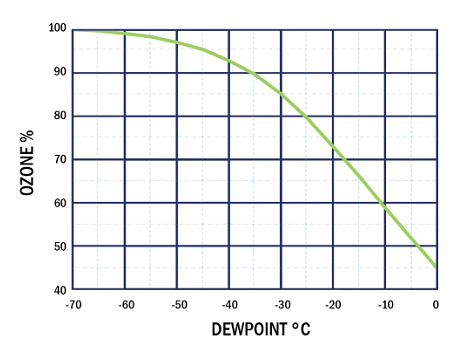Ozone Feed Gases
There are three types of feed gases used for ozone generation. They are ambient air, dry air and concentrated oxygen. Each of these are described below along with the advantages and disadvantages.
Ambient Air (air from the environment whether it is located indoors or outdoors.)
Ambient Air (air from the environment whether it is located indoors or outdoors.)
Advantages:
- Free
- Readily Available
Disadvantages:
- Results in corona cell maintenance every few days, weeks or months.
- Can cause electrical component problems due to insects that can get lodged in the corona cell or corona plate.

Dry Air (air which has moisture removed so the dew point in -60°C or lower.)
Advantages:
- Allows a consistent ozone output over time
- Reduces corona cell maintenance (very important)
- All dust and insects are removed
- Associated equipment is less expensive than concentrated oxygen
Disadvantages:
- Low concentrations result in low solubility in water
- More expensive than ambient air since equipment is required to remove moisture
- Still result in some nitric acid production
- Systems are more complex than using ambient air (need vacuum driven or pressure swing absorption air dryer)


The chart on the right shows how ozone generator output decreases as dew-point (moisture content) increases. Left axis shows the relative output of the ozone generator. (e.g. At -10°C dew-point, an ozone generator will be producing 60% of its maximum {rated} output.)
Concentrated Oxygen (oxygen which is of minimum 90% pure with moisture removed, -100°F dew-point; produced from an oxygen concentrator or delivered from an oxygen cylinder.)
Advantages:
- Allows a consistent ozone output over time
- Eliminates corona cell maintenance (very important)
- Virtually all moisture is removed
- Ozone output is typically doubled (2x) vs. using dry air
- Higher concentrations means very soluble in water
Disadvantages:
- More expensive than dry air systems since more equipment is required
- Systems are more complex than using dry air (need compressor and oxygen concentrator)


